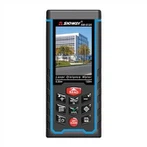What are the uses of measuring pens?
1. Used to determine whether an object is charged. Its internal structure is a light bulb with only two electrodes, filled with neon gas, commonly known as neon bubbles. One pole of the bulb is connected to the pen tip, and the other pole is connected in series with a high resistor and connected to the other end of the pen. When the voltage between the two poles of a neon bubble reaches a certain value, a glow is generated between the two poles, and the strength of the glow is proportional to the voltage between the two poles. When the voltage of the charged body to ground is greater than the glow voltage at the beginning of the neon bubble, and the tip of the measuring pen is in contact with it, the other end is grounded through the human body, so the measuring pen will emit light. The function of the resistor in the measuring pen is to limit the current flowing through the human body to prevent danger.
2. It can be used for low-voltage phase detection to measure whether any wires in the circuit are in phase or out of phase. The specific method is to stand on an object insulated from the ground, hold a measuring pen in each hand, and then test on the two wires to be tested. If the two measuring pens light up very brightly, then these two wires are out of phase; On the contrary, it is in phase, which is determined by the principle that the voltage difference between the two poles of the neon bubble in the measuring pen is proportional to its luminescence intensity.
3. Can be used to distinguish between alternating current and direct current. When testing with a test pen, if both poles in the neon bubble of the test pen emit light, it is AC power; If only one of the two poles emits light, it is direct current.
4. Can determine the positive and negative poles of direct current. Connect the measuring pen to a DC circuit for testing. The positive pole of the neon bubble that lights up is the positive pole, and the negative pole that does not light up is the negative pole.
5. Can be used to determine whether the DC is grounded. In a DC system with ground insulation, one can stand on the ground and use a measuring pen to contact the positive or negative pole of the DC system. If the neon bulb of the measuring pen does not light up, there is no grounding phenomenon. If the neon bubble lights up, it indicates that there is a grounding phenomenon. If it lights up at the tip of the pen, it indicates that the positive electrode is grounded. If it lights up on the finger end, it is negative ground. However, it must be pointed out that in DC systems with grounding monitoring relays, it cannot be used






